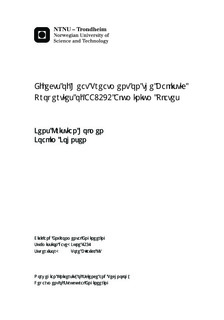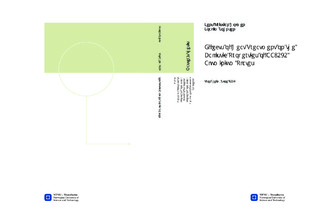| dc.description.abstract | The thesis includes a summary of important theory in the fields of impact engineering and plasticity theory, and a literature study is carried out on aluminium designations, alloying and heat treatment. The true stress-strain curves of aluminium alloy AA6070 in O-, T4-, T6-, and T7-configurations are identified by tensile tests where the behavior is continuously measured to fracture. The aluminium was delivered as 20 mm rolled plates; microstructural images and strain ratios are reported. Material constants are found by direct calibration and inverse modeling. Ballistic tests are done in a laboratory using 7.62 mm APM2 bullets, 20 mm blunt projectiles and 20 mm ogival projectiles (CRH = 3). From these tests the ballistic limit curves and the ballistic limit velocities are found for all temper/projectile combinations. In the material tests it was shown that the O-temper is the most ductile temper and consequently almost no fragmentation takes place in the ballistic tests for this temper. The T6-temper proved to be brittle, and fragmentation was commonly seen in the ballistic tests. The degree of fragmentation is found to be of vital importance for the ballistic performance. The Cockcroft-Latham fracture criterion is implemented by using the plastic work to fracture. Numerical analyses are performed with the IMPETUS Afea Solver and LS-DYNA, with 3D-models and 2D axisymmetric models, respectively. Ballistic limit curves and the ballistic limit velocities are calculated on the basis of the numerical results and then compared to the experimental values. Limited sensitivity studies are conducted on mesh size, heat-expansion dependency, strain-rate dependency, etc. Overall the results from 2D axisymmetric models are found to be consistent with previous studies, and the 3D-analyses carried out with the IMPETUS Afea Solver gave some good results. The IMPETUS Afea Solver proved to be a user-friendly finite element program with some powerful features. In addition to the numerical studies, a thorough derivation of the Cylindrical Cavity Expansion Theory (CCET) is given. Results from CCET are good for 7.62 mm APM2 bullets. A case-study where the ballistic performance is determined without conducting any experiments is also conducted. The results are promising, but less conservative than the original simulations, due to the inability to calibrate a fracture criterion. Some suggestions for further work within the field of impact engineering and the application of the finite element method are provided at the end of the thesis, followed by an appendix that includes graphical representations and photographs of the multiple material tests and program-codes written for use in the thesis. | nb_NO |

